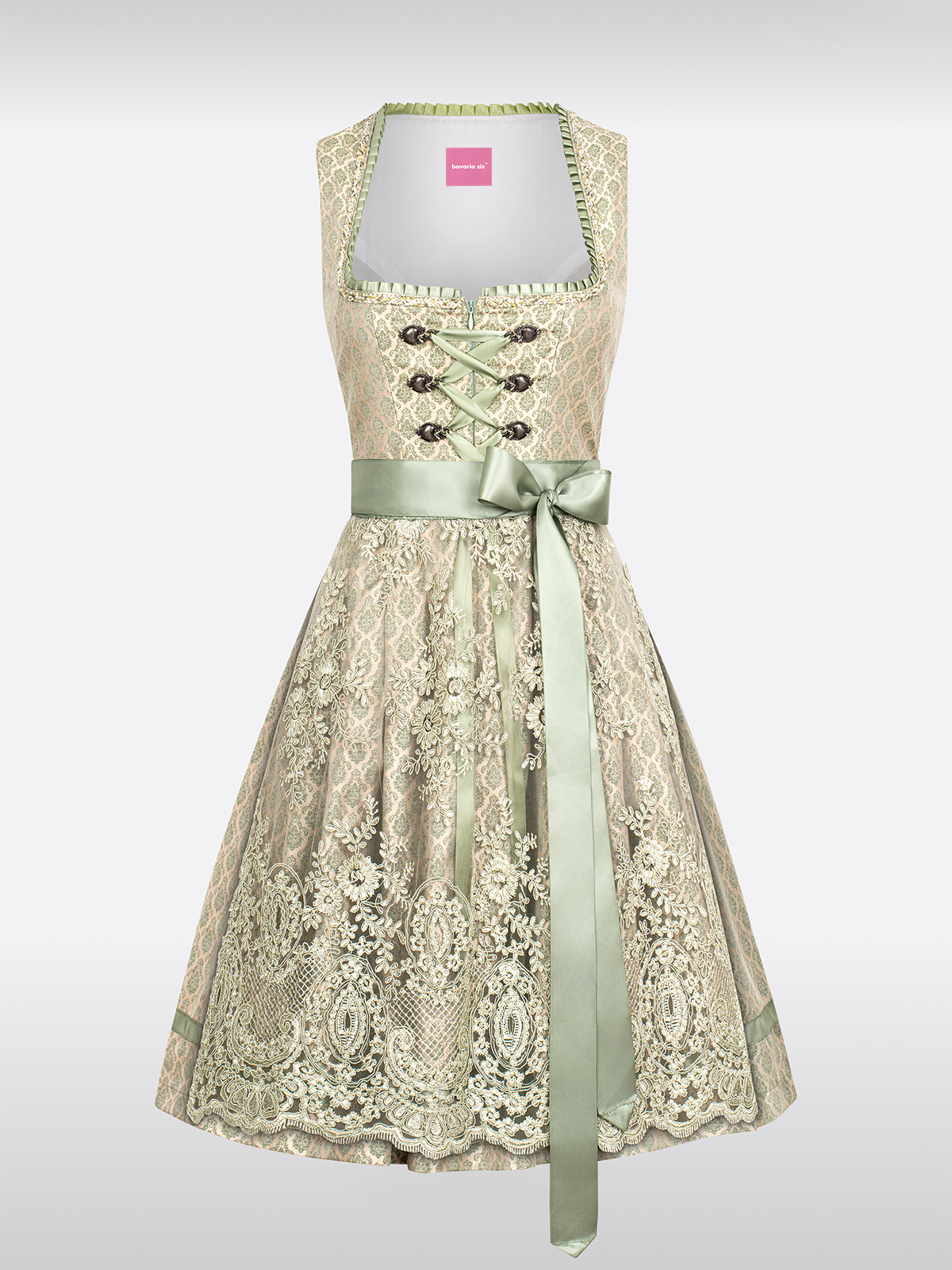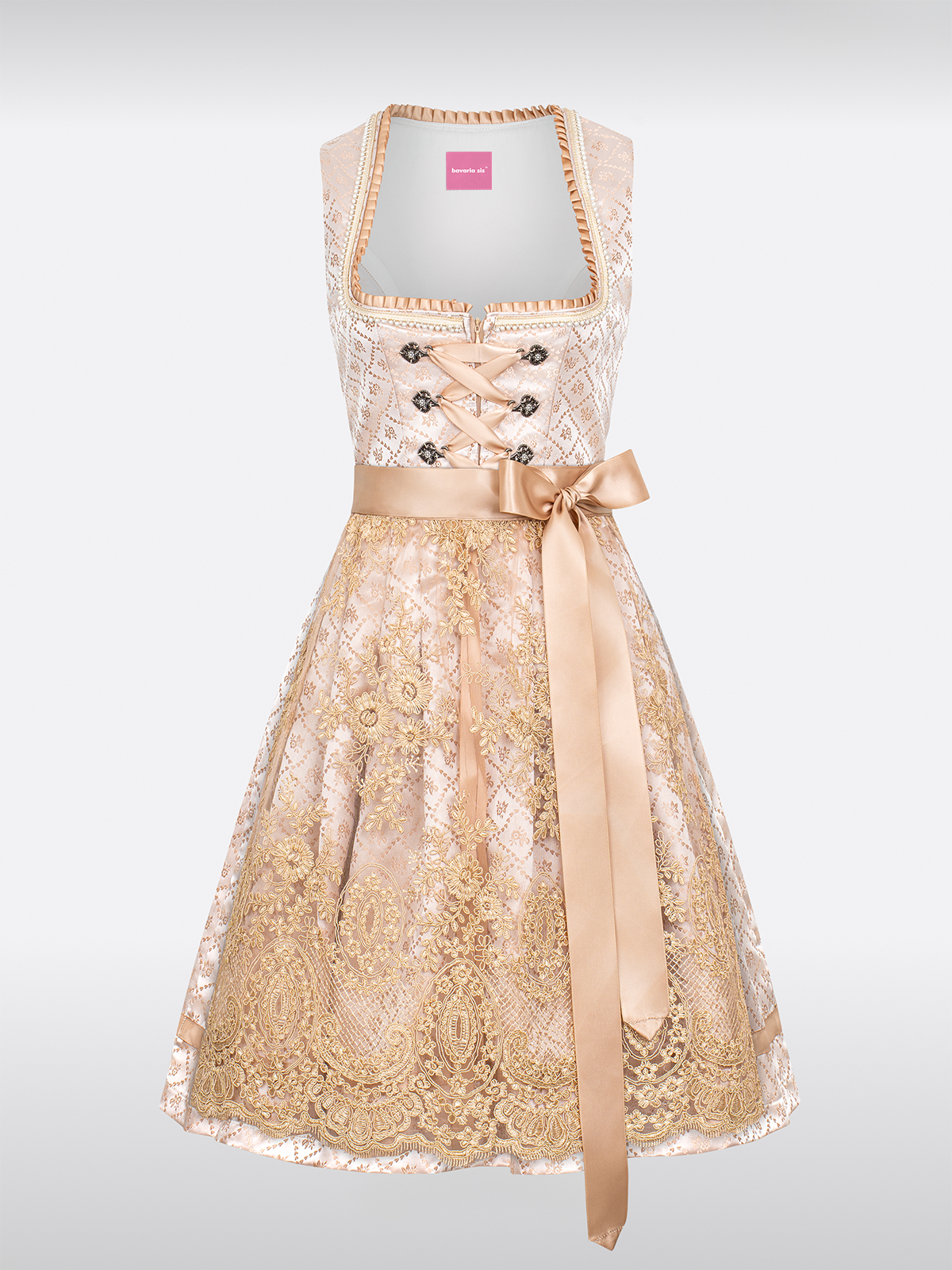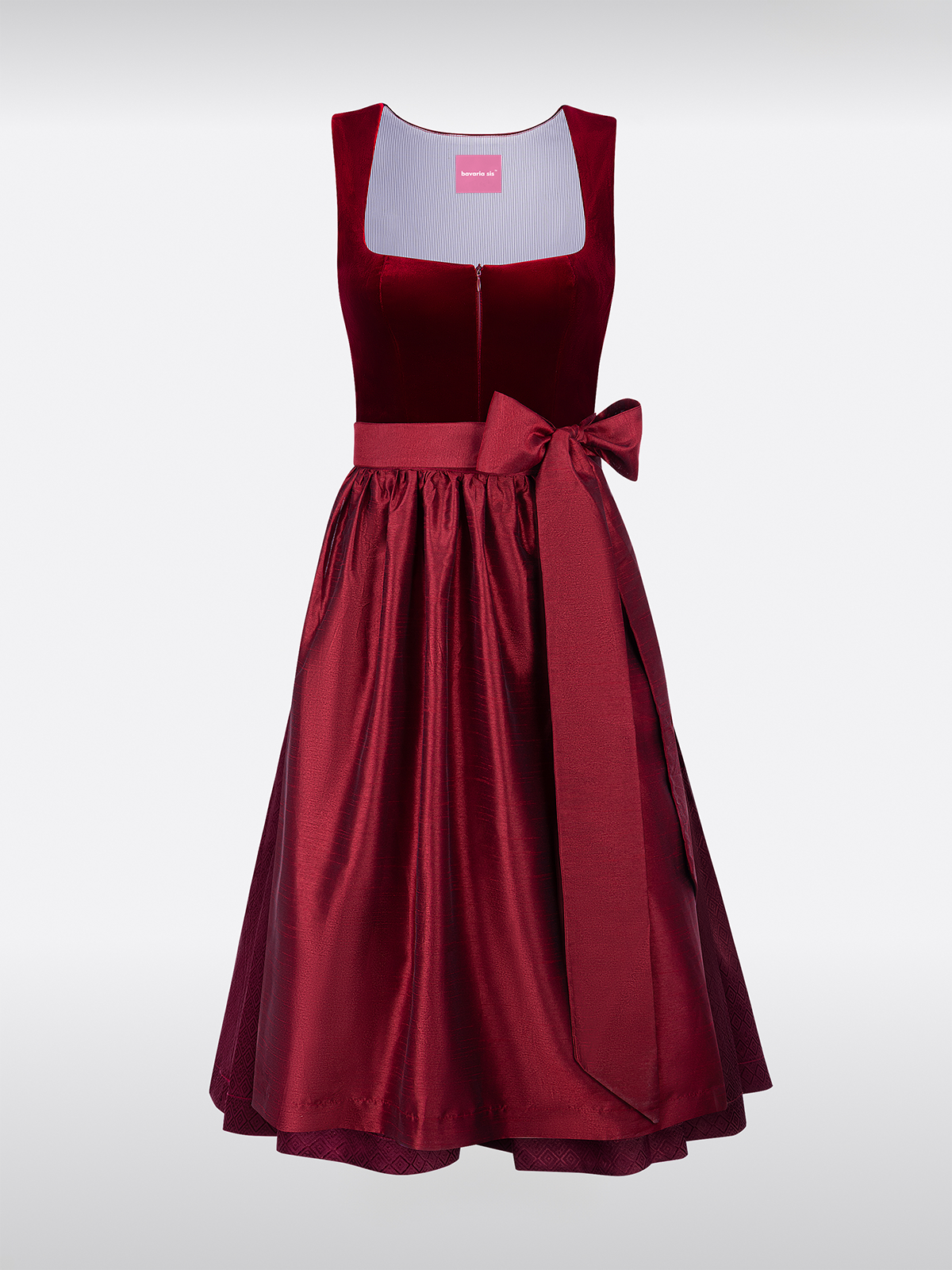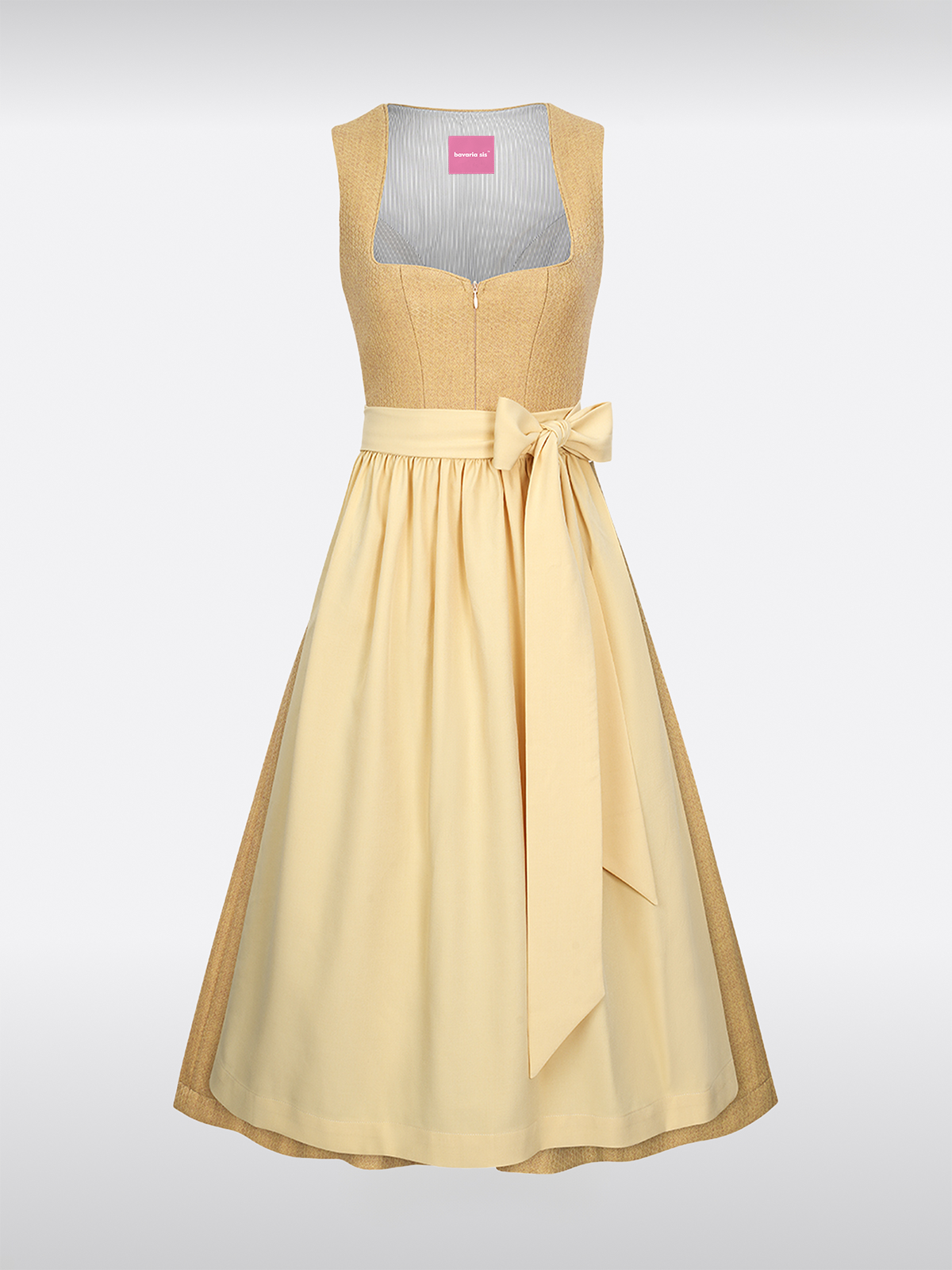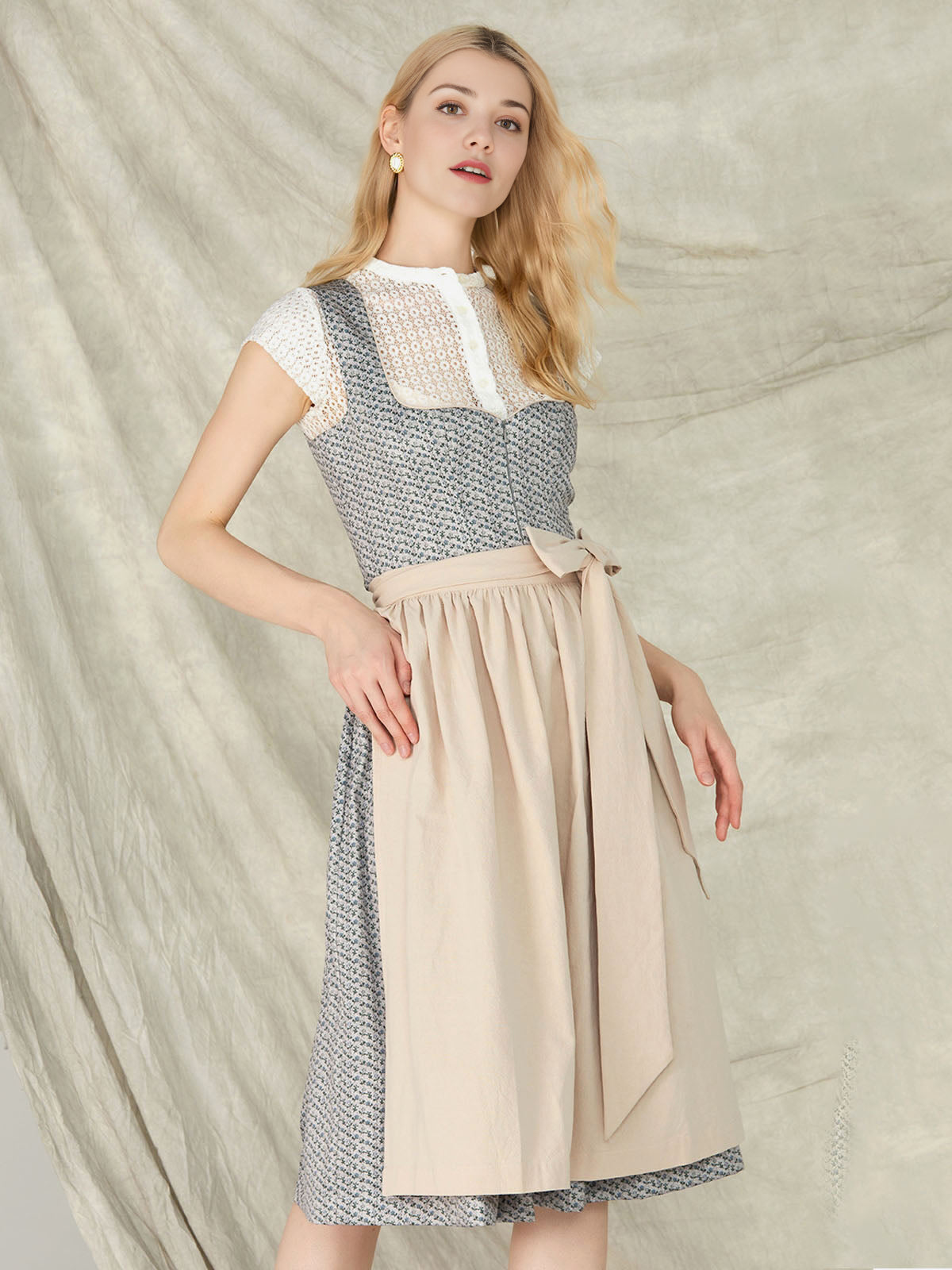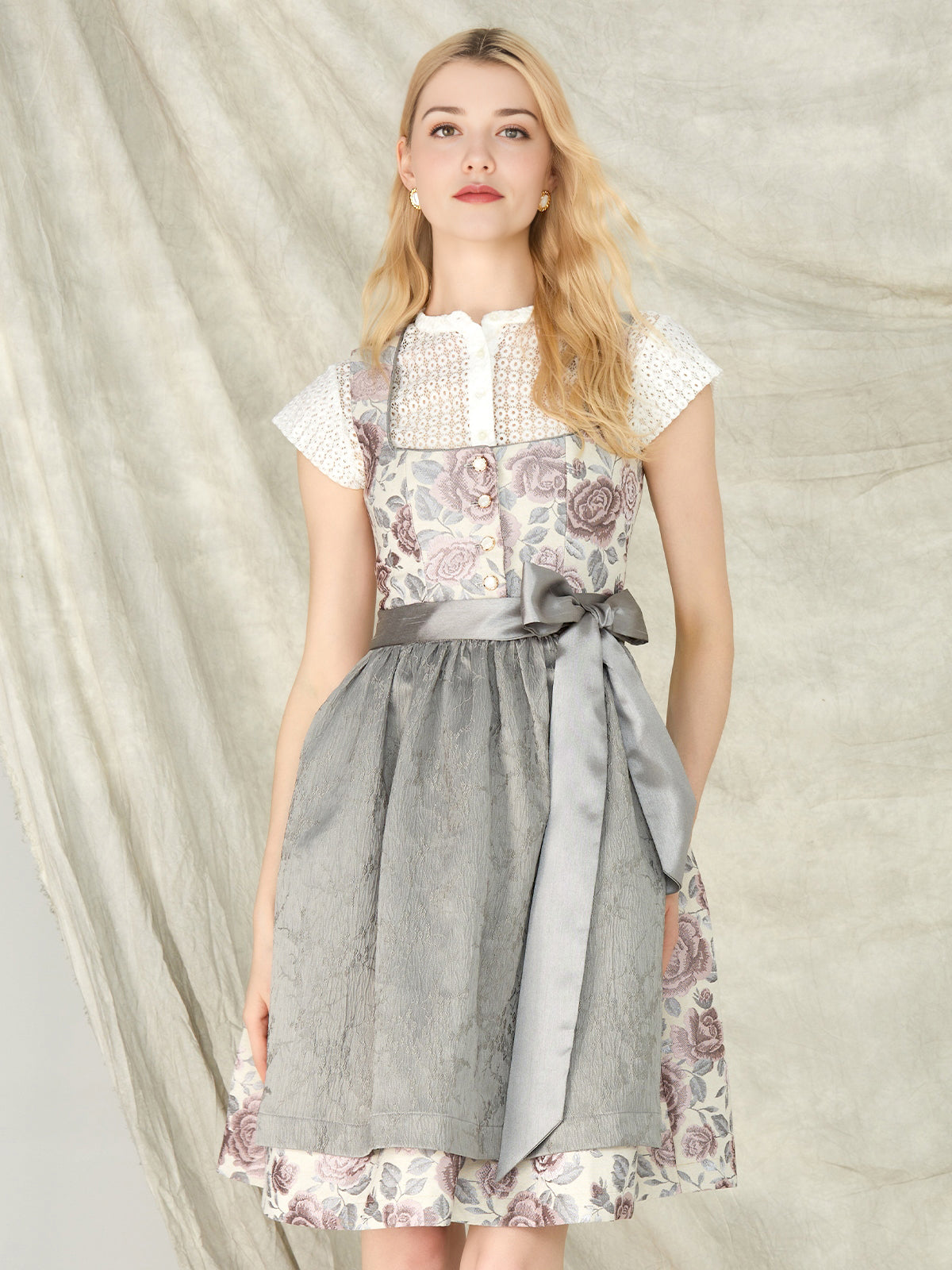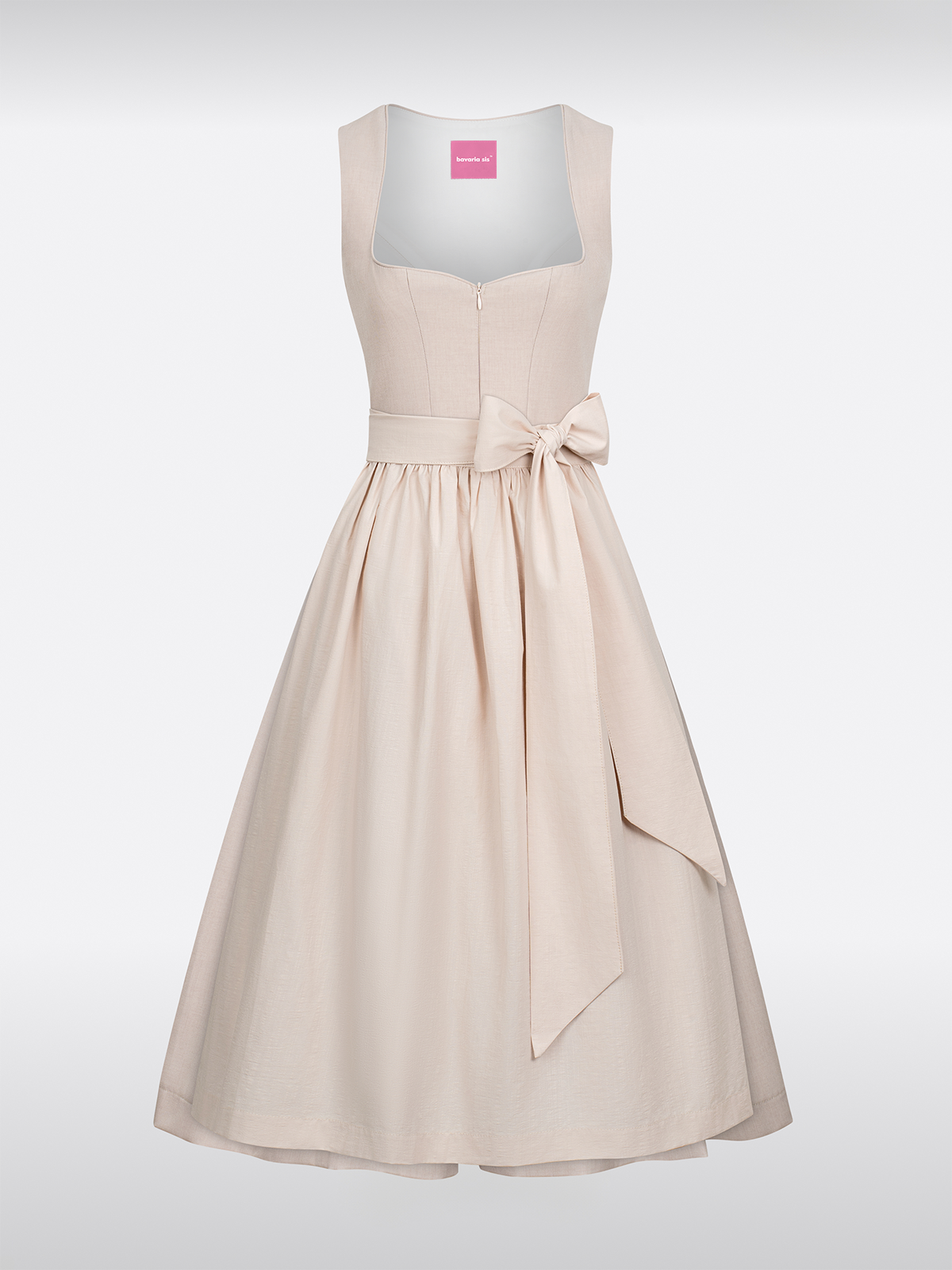Introduction: The Dirndl as a cultural witness
In the green valleys of the Bavarian Alpine foothills, a story began over a thousand years ago that now finds its climax in the streets of Munich. The yellow dirndl, once a simple work garment for peasant women, has now become one of the most iconic symbols of German folk culture. This transformation from practical workwear to elegant festive wear not only reflects the development of Bavarian society but also tells the story of a people and their identity.
The origins in the 14th century: The simple peasant dress
The history of yellow dirndl Its origins date back to medieval Bavaria, where it originated as practical workwear for peasant families. The early forms of the dirndl were made of simple linen fabrics in earthy tones – including the characteristic dirndl yellow, which was often made from self-dyed natural fibers.
The original costume was characterized by its functionality: a tight-fitting top, a multi-placket apron, and a wide skirt formed the basis. The color yellow had a practical significance at the time – it was easy to clean and hid dirt better than darker tones. yellow dirndl was therefore not only a fashion statement, but also a smart choice for everyday life on the farm.
The materials were simple: linen, woolen fabrics and occasionally dirndl velvet in simple designs. The craftsmanship was usually done within the family itself, with each region developing its own stylistic characteristics. Especially in the Alpine region, the traditional costumes were decorated with hand-embroidered ornaments, often featuring regional symbols and motifs.
The aristocratic transformation in the 19th century
With the rise of the Bavarian kingdom in the 19th century, the dirndl's first major metamorphosis began. Courtly fashion had a lasting influence on traditional costume, and the simple peasant dress became a fashionable accessory of the upper class.
The Dirndl yellow variations now featured elaborate embroidery, fine trims and complicated cuts. dirndl velvet became the preferred material for festive occasions, while everyday versions continued to be made of cotton and linen. The color palette expanded, but yellow retained its special significance—symbolizing sunshine, harvest, and joie de vivre.
Under the influence of the Prussian court and the emerging Romantic movement, the costume became even more refined. The aprons became shorter, the sleeves more figure-hugging, and the yellow dirndl They often featured small pockets and decorative buttons. The aristocratic interpretation of the dirndl created a new aesthetic that both preserved traditional elements and incorporated modern fashion trends.
Especially during the Hofbräuhaus era under King Ludwig II, the dirndl yellow in popularity. The royal family liked to wear this color in public appearances, which cemented the status of yellow as the color of the aristocracy. Dirndl velvet versions became sought-after collector's items, often decorated with family crests and royal insignia.
The commercial renaissance after 1945
After World War II, Germany faced the challenge of redefining its cultural identity. The tourism industry recognized the potential of traditional folk culture early on and focused on reviving traditional costumes.
The yellow dirndl now experienced its commercial heyday.Industrial production made the costume affordable, and mass production enabled a variety of styles. Dirndl yellow models became popular souvenirs for tourists who wanted to get to know Bavaria.
The Dirndl velvet variations now also reached a wider audience. The quality of the material improved, and the color palette was expanded through modern dyeing techniques. But the classic yellow dirndl remained a perennial favorite – both among tourists and local traditional costume enthusiasts.
The introduction of the modern Oktoberfest in 1950 marked a turning point. dirndl yellow became an indispensable accessory of the folk festival, and its popularity grew exponentially. Dirndl velvet versions found their way into the shop windows of the Munich fashion world and became real fashion statements.
Modern interpretations: tradition meets avant-garde
Today the yellow dirndl At the intersection of tradition and modernity, designers are discovering traditional costumes for contemporary fashion, incorporating elements from punk, bohemian, and street style.
The The new generation of dirndl yellow collections combine traditional cuts with modern materials. Dirndl velvet is now offered not only in classic designs, but also in metallic finishes and with unconventional textures. The color palette of the yellow dirndl ranges from delicate pastel shades to bright neon yellow tones.
Designers like Michael Michalsky and Lena Hoschek have dirndl yellow into their collections, using elements from the punk and gothic scene. Dirndl velvet versions often have unusual details such as metal fittings, asymmetric cuts or combined fabrics.
The Dirndl yellow trend interpretations demonstrate that traditional costume remains vibrant when it can be transformed. The modern version combines the aesthetics of the past with the functionality of the present, thus creating a new understanding of folk culture.
The future of the dirndl: sustainability and innovation
The current development of the yellow dirndl shows a clear trend towards sustainability. Eco-friendly materials, fair production conditions and regional manufacturing are becoming increasingly important. Dirndl velvet manufacturers are increasingly relying on organic cotton and recycled fabrics.
The dirndl yellow Today, it's seen not just as a fashion trend, but also as an expression of a conscious lifestyle. The combination of tradition and modernity reflects the values of today's society—authenticity, individuality, and respect for history.
Innovative technologies such as 3D printing and digital customization options are revolutionizing manufacturing. Customers can create their own dirndl yellow Configure online and receive tailor-made pieces that fit your figure perfectly. dirndl velvet-Quality benefits from modern finishing techniques that improve durability and comfort.
Conclusion: A piece of clothing tells a story
The yellow dirndl is more than just traditional clothing—it's a living document of German cultural history. From its humble beginnings as a peasant costume to a modern fashion icon, the dirndl has continuously evolved while always preserving its essence: the connection between people and tradition.
The dirndl yellow tradition shows how culture stays alive when it can change.The Contemporary dirndl velvet variants prove that authenticity and innovation do not have to be a contradiction. In every fiber of the yellow dirndl It is the story of a people who know their roots and yet look courageously to the future.
Whether at the Oktoberfest, at the folk festival or in everyday life – the dirndl yellow remains a symbol of joie de vivre, community, and cultural identity. It reminds us that tradition doesn't have to be rigid, but can continually reinvent itself with the changing times.

